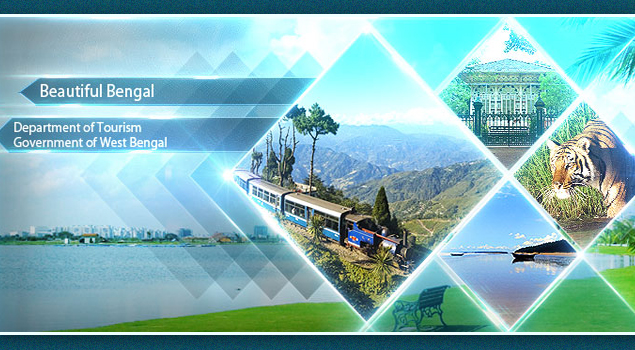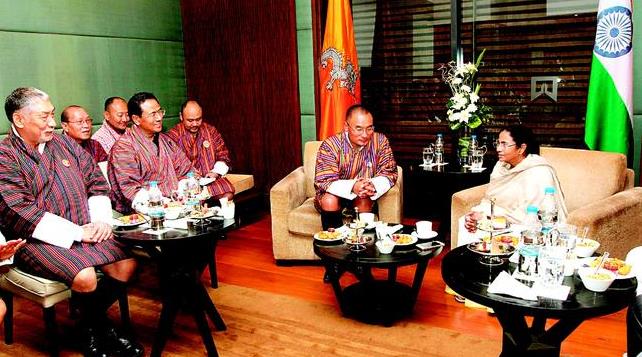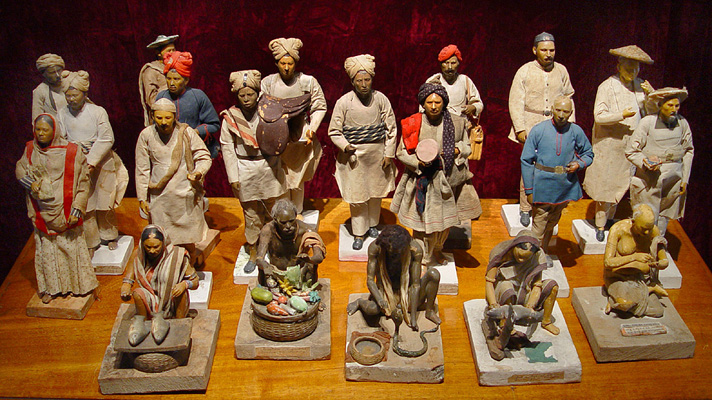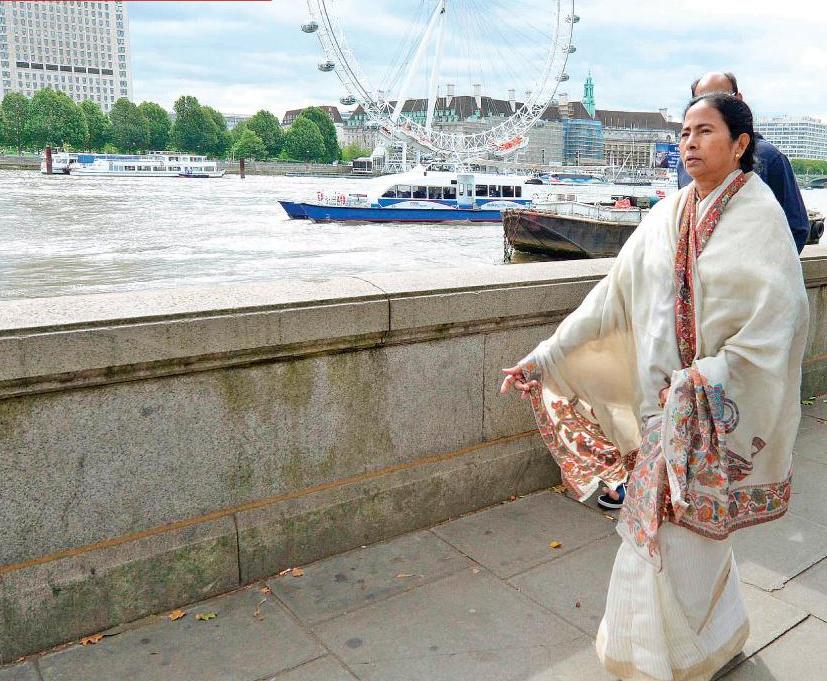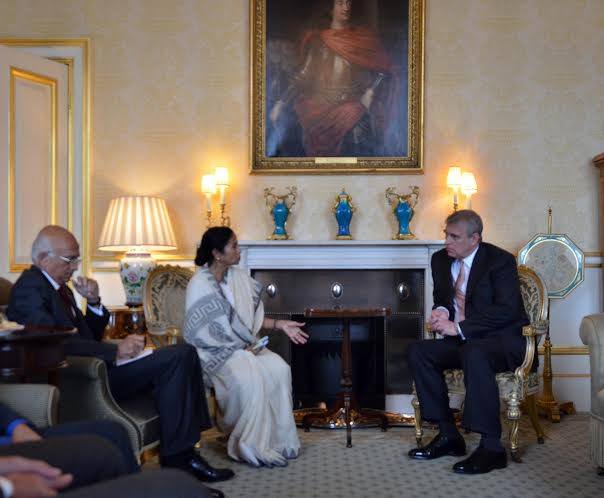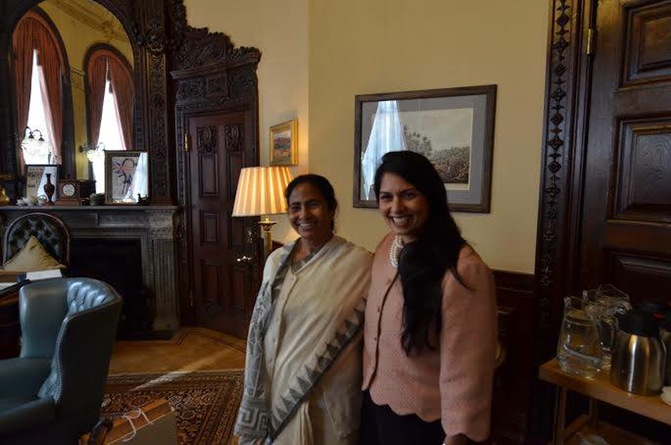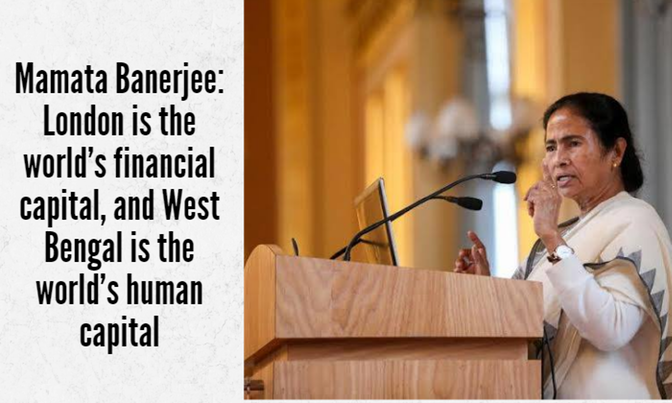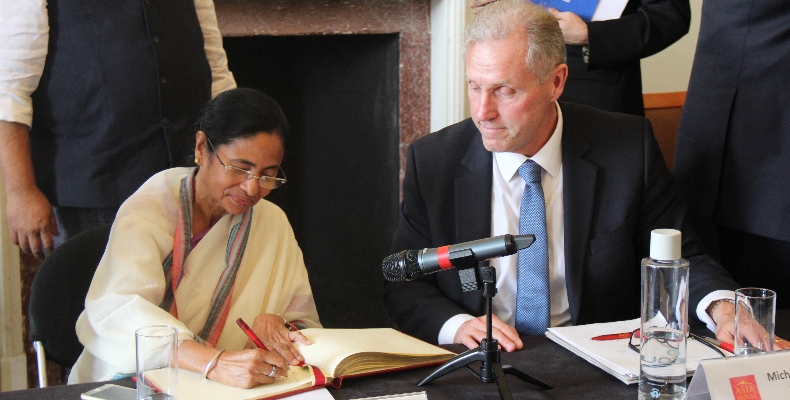Trinamool Congress has been instrumental in changing the perception of Bengal and has brought a wave of development under the able leadership of the party Chairperson and West Bengal Chief Minister Mamata Banerjee.
Trinamool Congress has been the face of numerous movements ranging from Singur and Nandigram to fight against intolerance and has been fighting for the cause of strengthening the federal structure of the country.
Since 2011, after Mamata Banerjee became the first woman Chief Minister of West Bengal, Trinamool Congress has been instrumental working on the erstwhile non-existent infrastructure in industry, health, food and supplies systems and above all brought peace in Jangalmahal and the Hills.
In Parliament, where Trinamool is now a force to reckon with, having 34 MPs in Lok Sabha and 11 MPs in Rajya Sabha, has been raising core issues and has acted as a constructive opposition.
Here is a short summary of what the West Bengal Government under Trinamool Congress could achieve in the last 4 and half years:
Numbers show where Bengal stands as compared to India –
The Gross Value-Added (GVA) growth of West Bengal stands at 10.48% whille that of India is 7.5%.
The increase in Per Capita Income in 2014-15 in West Bengal is 12.84% while that of India is 6.1%.
The increase in Industry in 2014-15 in West Bengal stands at 8.34% while that of India is 5.6%.
The increase in Agriculture, Forestry and Fishery in 2014-15 has been 6.49% while that of India is 1.1%.
Development in Health sector
Since 22nd October 2014 user-charges for all sorts of investigations, medicine & beds have been waived for all secondary hospitals leading to a giant leap in materializing the goal for health for all.
To increase bed strength, the Government is setting up 41 new Multi- Speciality & Super-Speciality Hospitals. From just 6 Sick New Born Care Units (SNCU) in May 2011, the State now has 48 functioning SNCUs which are playing a major role in reducing infant mortality & morbidity. There was not a single Sick Neonatal Stabilization Unit (SNSU) in May, 2011.
Through Private Public Partnership (PPP) 95(ninety-five) Fair Price Medicine Shops (FPMS) have been opened with a turnover of Rs.544 crores leading to a saving of Rs.344.00 crores to the patients through supply of medicine & equipment by way of discounts covering 1.23 crore prescriptions. This scheme has been declared a Model Scheme by the Government of India.
In addition, 36 (thirty six) Fair Price Diagnostic Centres at Govt. approved rates, much below the market price (e.g. Digital X-Ray @Rs.100, CT Scan @Rs.500, Dialysis @ Rs.500, etc.), have been made operational, benefiting 40,000 patients & of which 9,000 patients have been given 100% free service
Free medicine and free bed-charges scheme – which existed in the zilla and district hospitals – is now extended to medical colleges.
Sisusathi Prokalpo, a free of cost surgery for children affected by congenital heart diseases has been introduced in three private hospitals, including SSKM, under Sisusathi Prokalpo. A human milk bank named Madhur Sneha has been opened at SSKM Hospital. This is a first for eastern India. A cord blood bank has been established in Kolkata, the first of its kind in the eastern region.
Development in Law and Order
As per published data by the National Crimes Records Bureau, Kolkata is a safe city for women, well behind in recorded crimes compared to the cities of Delhi, Mumbai, Bengaluru and Ahmedabad. Kolkata was awarded the “best city” tag when it came to crime-rate and safety at the second edition of the India Today Best City Awards 2014, based on a study of 30 capital and metro cities and 20 emerging cities in India.
Fourteen (14) coastal police stations and five (5) cyber-crime police stations have been set up in the State. In the first phase 30 women police stations were set up, 10 more are being set up and the total target is 65.
Child-friendly Police Stations being set up and nine police stations in Kolkata and 29 police stations across the State have been shortlisted initially.
The Janglemahal area where Left-Wing extremism held sway until the new Government entered office, continued to remain peaceful with the local population being engaged by manifold initiatives of the Government in various economic, social, cultural and sporting activities.
Development in Land & Land Reforms
The Government has been consistently ensuring that the landless are provided land titles, which include forest pattas, Nija Griha Nija Bhumi (NGNB) and LR pattas. More than 2 lakh 30 thousand pattas have been distributed under Nija Griha Nija Bhumi (NGNB), a unique scheme which the Government has introduced to provide houses to the houseless people.
The state government has created an unparalled precedence by distributing pattas to more than 1,92,000 thousand landless families. In this regard it is worth mentioning that while 5670 and 37,723pattas were distributed during 2009-10 and 2010-11, respectively, during the tenure of the present government, a record number of 1,06,264 landless families were distributed pattas.
In the last two years of the Left rule, the land revenues collected was Rs 520.62 crores. In 2009-10, the collection was Rs 244.08 crores and in 2010-2011, it was Rs 276.54 crores. In two years under the Trinamool Government, land revenues collected is Rs 1036.45 crores. In 2012-13, the revenues collected are Rs 483.71 crores and in 2013-14 it was Rs 552.74 crores. On an average, in the last two years in comparison to to Rs 260.31 crores collected by the Left Government, the Trinamool Government has collected Rs 518.23 crores.
In the financial year 2014-15, till December 2014, the Trinamool Government has already collected Rs 429 crores as revenue in nine months, which s expected to be around Rs 600 crores at the end of the financial year in March.
Development for Minority communities
Budget allocation of the Minority Affairs and Madrasah Education Department has increased from Rs.472 Crore in 2010-11 to Rs.1737 Crore in 2014-15, an increase by almost 4 times.
Urdu, Nepali, Hindi, Oriya, Santali and Gurumukhi have been made official languages in places where more than 10% of people belonging to the respective communities reside.
With an increased emphasis on education as the means of development, fifty seven (57) lakh students from minority communities have benefited from different scholarship schemes. Construction of 279 hostels has been taken up for providing better educational environment for the first generation learners.
The Government is committed to address the need for social, educational and economic development of the Scheduled Castes (SC), and Other Backward Classes (OBCs). 17% reservation in higher education for OBC has been introduced without affecting seats for General candidates, to be implemented over a 6-year period. Already 10.6% reservation for OBC has been achieved in 2014-15, the very first year.
The Government has introduced a new scholarship scheme “SIKSHASHREE” for both ST and SC students of Class V to VIII.
In the calendar year 2014, more than eighty thousand caste certificates were issued to STs and one lakh twenty thousand students were provided scholarships which are considerably higher than the previous period. The Government has increased coverage under Tribal pension scheme and nearly 1,32,000 ST beneficiaries are now provided old age pension.
The Government has constituted Mayel Lyang Lepcha Development Board and Tamang Cultural and Development Board for addressing special needs of both the communities living in the State. A Cultural Board for Sherpas has also been announced. The Government has taken up housing schemes for the poor Lepcha and Tamang beneficiaries in 2014.
Development in Micro Small and Medium Enterprises sector
While the country performed abysmally with a 0.7% growth rate in the industrial sector, constant focus on the MSME sector has been a major factor in West Bengal’s achievement of a 9.58% industrial growth rate in the financial year 2013-14.
West Bengal has the second largest number of MSME enterprises. It has 36.64 lakh enterprises which constitute about 10% of total Indian MSME enterprises. With an output of Rs 78,880 lakh crore it represents an important sector of West Bengal’s economy. Since 2011, more than 30,000 new industries have been set-up, with an investment of more than Rs 2,595 crore, This has resulted in employment generation to the tune of more than 2,02,245 jobs.
Policy for medium, micro and small-scale, and textile, industries, 2013-18 has been announced.
To promote innovative and high potential MSME enterprises, the Government has introduced MSME Venture Capital Fund with a corpus fund of Rs. 200 crore. New industrial estates and parks are being set up along with common facility centres for MSME and Textile industry in the state.
The Government has set up Biswa Bangla Marketing Corporation (BBMC) as an umbrella organization of Biswa Bangla showrooms and Biswa Bangla Haat to carry on the business of marketing for various traditional and heritage products of the State with special emphasis on development of market for traditional artisans/weavers.
Over 800 Information Technology companies are operating in the State. The Government had taken up a project of constructing of 15 (Fifteen) Information Technology Parks across the State It is expected that IT Parks at Durgapur (Phase-II), Asansol, Barjora, Purulia, Bolpur, Kharagpur, Rajarhat and Siliguri (Phase-II) will start operation within 2015-16 itself. Classes with the first batch have already started in the Indian Institute of Information Technology (IIIT) at Kalyani.
Bengal is No.1 in All India Skill Competition. The Government intends to skill 5(five) Lakh individuals in calendar year 2015 under various schemes. The “West Bengal Handloom Circuit Development Scheme – 2014” which will provided upgraded skilling to 97,000 handloom weavers and ancillary workers over the next three years has been launched.
The Social Security Net provided by The Government through the State-Assisted Provident Fund Scheme for the Unorganized Workers including construction workers, taxi/auto drivers has achieved a milestone with the enrolment of over 50 lakh workers with an expenditure of Rs. 187.50 crores in 2014-15 year.
Samajik Mukti Card, a smart card, has been distributed to 10 lakh unorganised workers this year. A system of on-line registration of factories has started from April 2014 and submission of factory licence fee through the GRIPS Portal has also been introduced. The Government has also started construction of regional offices of the Labour Department at Siliguri and Asansol.
In MSME, Bengal has the highest credit off take during April-September 2013 with a flow of Rs 8,900 crore in this sector. “This is more than 105% increase on year-to-year basis.
Development for Women and Children
August 14 has been celebrated as Kanyashree Dibas. The scheme aims to promote higher education and secure the future of our girl child and transform them to responsible women of tomorrow. So far 31 lakh girls have been registered under the scheme. Earlier girls enrolled in Class VIII – XII in schools used to receive an annual scholarship of Rs 500. The scholarship amount was increased to Rs 750 from FY 2015-16. One-time grant of Rs 25000 is provided to each of the unmarried girl student on attaining 18 years of age. UNICEF has partnered West Bengal Government after scanning the feasibility of the scheme. Department for International Development, United Kingdom and UNICEF selected the scheme for presentation at the ‘Girl Summit 2014′ held at London. West Bengal government won the Silver Medal for the “Kanyasshree Prakalpo” in the Category of “Outstanding Service in Citizen-Centric Service.” More than 31 lakh girls have registered to Kanyashree which gives them allowance to carry on their studies and side by side stops early marriages of girls and lowers the chances of human trafficking.
Besides Kanyashrre, the Anganwadi projects have shown tremendous growth with 35,926 centres set up till January 2015. The West Bengal CM has started a monthly allowance for the Anganwadi workers. 13 lakh women are now enlisted with the Sabala project.
In the last year of the past Left Government, in 2010-11, the panned expenditure in Women,Child Development and Social Welfare Department was Rs 715.30 crores, while in 2014- 15 the revised budget allocation moved by Trinamool was Rs 3170.07 crores, the amount increased by 4.43 times.
In the 2014-15 Budget (revised), the allotment for Child Development alone was Rs 2520.04 crores.
Uttar Dinajpur has been taken up as a model district for workshops regarding campaigning against trafficking of women and children.
A 3-year working plan has been compiled for building Centre of Anganwadi. 13,389 such new centres are being set up. Arrangements have been made for the women and children in Anganwadi Centres to receive nutritious food such as egg, soyabean, seasonal vegetables, rice and dal instead of Khichdi.

